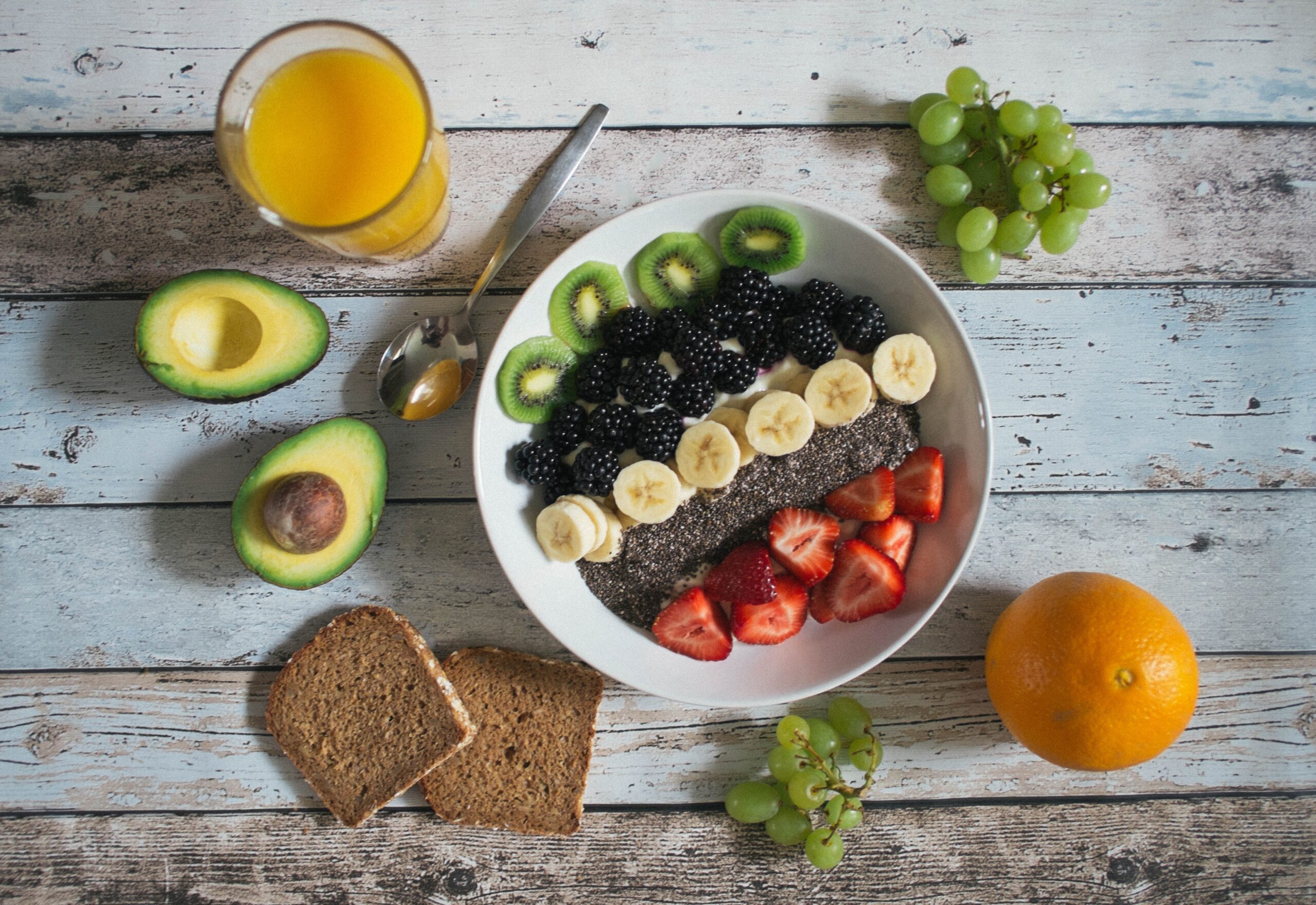Do you know about the best healthy diet plan approved by the US Government???
Are you tired of fad diets that promise quick weight loss but leave you feeling hungry and unsatisfied? Look no further! The US government has approved a healthy diet plan that will not only help you shed those unwanted pounds but also improve your overall health.
This diet plan is backed by extensive research and has proven to be effective in reducing the risk of chronic diseases such as heart disease, diabetes, and certain cancers. Say goodbye to crash diets and hello to long-term success with this ultimate guide to a healthy lifestyle.
The Biggest Changes to the 2020 Dietary Guidelines
The United States government has released its long-awaited update to the dietary guidelines, and there are some big changes. The most significant change is the addition of a new category – “added sugars” – which includes all the sugar that is added to food during processing, as well as the sugar we add ourselves when we bake or cook at home. This is a major shift, and it means that we need to be more aware of the sugar we’re eating.
In addition, the guidelines now recommend that adults should consume less than 10% of their calories from added sugars. This is a tough limit to meet, but it’s important to remember that added sugars are empty calories with no nutritional value. The best way to reduce your added sugar intake is to eat more whole foods and cook at home more often.
Another big change in the 2020 guidelines is the recommendation for adults to consume at least half of their grains as whole grains. This is a great change, as whole grains are packed with nutrients and fiber that our bodies need. The problem is that many Americans still don’t consume enough whole grains, so this will be a challenge for many people. The best way to increase your intake of whole grains is to choose foods like whole wheat bread, oatmeal, and brown rice instead of processed options like white bread or white rice.
Finally, the 2020 guidelines continue to emphasize the importance of a healthy lifestyle overall. This means maintaining a healthy weight and being physically active.

healthy diet plan approved by the US Government
Say No to a Low-Carbohydrate Diet or Limited Consumption of Carbohydrates
A low-carbohydrate diet or limited consumption of carbohydrates has been linked with a number of health concerns, including weight gain, Type 2 diabetes, and heart disease. The U.S. government does not recommend this type of diet for people who are trying to lose weight or improve their health.
Read More: Useful Tips To Help You Keep Your Diet
Consume Water Instead of Milk
It is recommended that individuals consume water instead of milk for several reasons. Water is a calorie-free beverage, while milk contains calories. In addition, water helps to keep the body hydrated and functioning properly, while milk can actually contribute to dehydration.
Finally, water is a natural detoxifier, while milk can contain harmful toxins.
Warning against Consumption of Red or Processed Meat
The United States government has recently released a report detailing the dangers of consuming red or processed meat. The report cites several studies which have shown that consuming large amounts of red or processed meat can lead to an increased risk of developing certain types of cancer, cardiovascular disease, and other chronic health conditions.
While the government recommends that people limit their consumption of red and processed meat, they do not recommend eliminating it entirely from the diet. Instead, they advise people to eat leaner cuts of meat, cook meat at lower temperatures, and avoid processed meats such as lunch meats, hot dogs, and sausages.

healthy diet plan approved by the US Government
Promoting Plant-Based Eating Patterns
There is no one-size-fits-all approach to promoting plant-based eating patterns. The key is to make sure that your promotion strategy is tailored to your audience and based on the latest scientific evidence.
Here are some general tips for promoting plant-based eating patterns:
1. Use social media to spread the word about the benefits of plant-based diets.
2. Write blog posts or articles about the benefits of plant-based diets and share them with your friends and family.
3. Give talks or presentations about plant-based diets at local schools, community groups, or workplaces.
4. Encourage restaurants and grocery stores to offer more plant-based options.
5. Support public policy initiatives that promote plant-based diets (e.g., Meatless Monday campaigns).
Get Nutrition through Every Bite
A healthy diet is important for many reasons. It can help you maintain a healthy weight, have more energy, and avoid diseases. The best way to get nutrition is through every bite. That means eating a variety of nutrient-rich foods from all the food groups in the right amounts.
The United States Department of Agriculture’s (USDA) Dietary Guidelines for Americans recommends that adults eat a variety of fruits and vegetables, whole grains, lean protein sources, and low-fat or fat-free dairy. They also recommend limiting calories from added sugars and saturated fats.
To make sure you’re getting the nutrients you need, it’s important to read food labels and choose foods that are rich in the nutrients you need. For example, if you’re trying to get more fiber in your diet, look for foods that are high in fiber and low in calories. Some good choices include fruits, vegetables, beans, and whole grains.
If you have any questions about nutrition or want to learn more about how to eat a healthy diet, talk to your doctor or a registered dietitian.
Choose Your Own Individual Eating Pattern
When it comes to eating healthy, one size does not fit all. The best diet plan is the one that you can stick to. And that means finding a plan that fits your lifestyle, preferences, and health needs.
The good news is that there are plenty of healthy eating plans to choose from. So whether you want to eat more fruits and vegetables, cut down on sugar and calories, or boost your intake of protein and fiber, there’s a plan out there for you.
Here are some tips to help you find the healthy eating plan that’s right for you:
1. Consider your goals. What are you hoping to achieve by following a healthy diet? Do you want to lose weight, lower your cholesterol levels, or reduce your risk of developing heart disease or diabetes? Once you know what your goals are, you can start looking for a plan that will help you achieve them.
2. Think about your lifestyle. Do you have a lot of time to cook meals from scratch? Or do you prefer quick and easy recipes? If time is tight, look for a plan that includes healthy frozen or pre-made meals. And if cooking isn’t your thing, consider signing up for a meal delivery service like Factor or Hello Fresh.
3. Consider your budget. Healthy eating doesn’t have to be expensive. In fact, many nourishing foods – like beans, eggs, and oats – are
Final Notes
The United States Department of Agriculture (USDA) has released its new healthy diet plan, and it’s based on the latest scientific evidence. The plan recommends that Americans eat more fruits, vegetables, whole grains, low-fat dairy, and lean protein. It also limits calories and saturated fat.
The USDA’s previous diet plan, released in 2005, was based on the Dietary Guidelines for Americans, which are updated every five years by a panel of nutrition experts. The new healthy diet plan is an update to those guidelines.
“The bottom line message is that we should all be eating a healthy diet,” said Dr. Angela Tagtow, director of the USDA Center for Nutrition Policy and Promotion. “That means filling half your plate with fruits and vegetables at every meal, choosing whole grain foods over refined grains, opting for fat-free or low-fat dairy products instead of whole milk dairy products, limiting saturated fats and trans fats, and choosing lean protein sources.”
To help Americans make these healthier choices, the USDA has created a new food guide called MyPlate. MyPlate shows how much of each food group you should be eating at every meal. The goal is to make half your plate fruits and vegetables, with the other half split between grains and protein.

